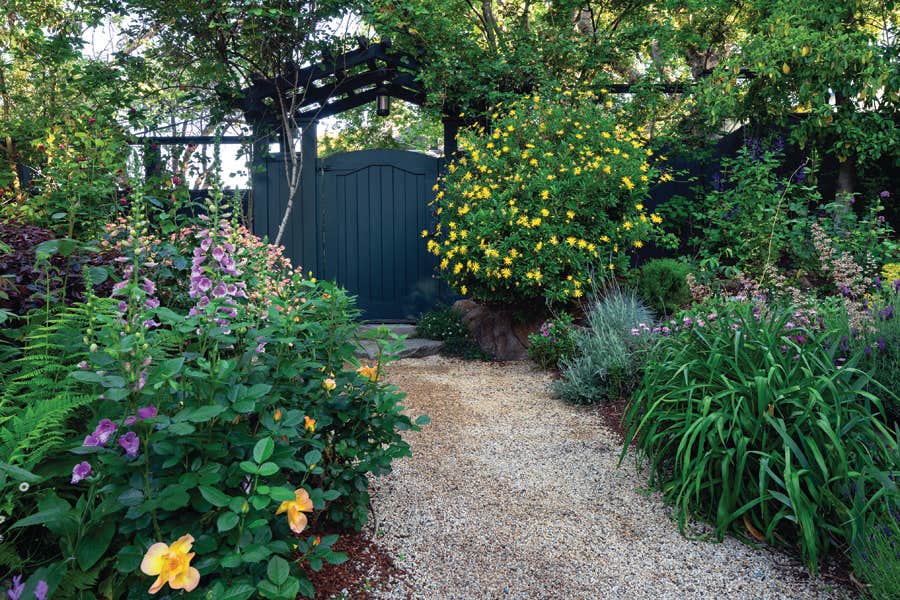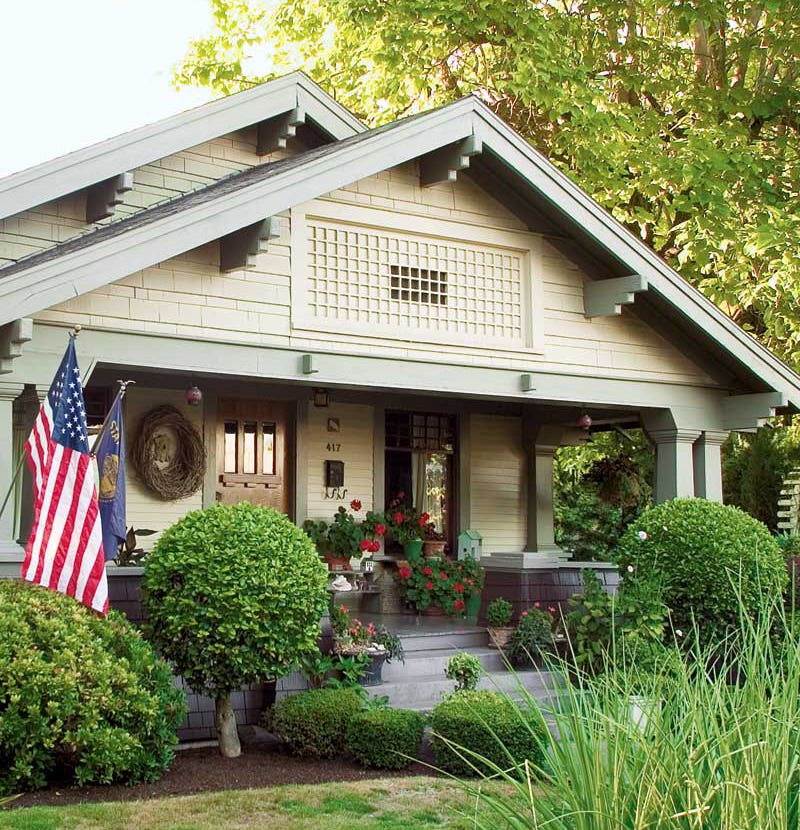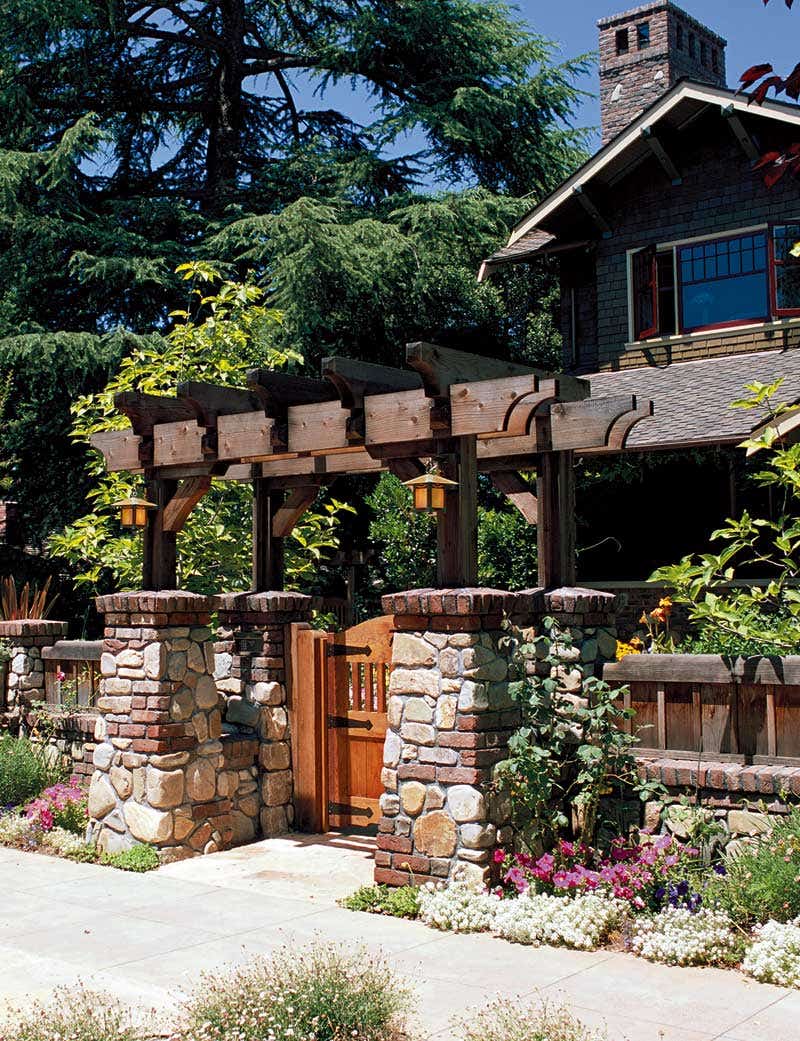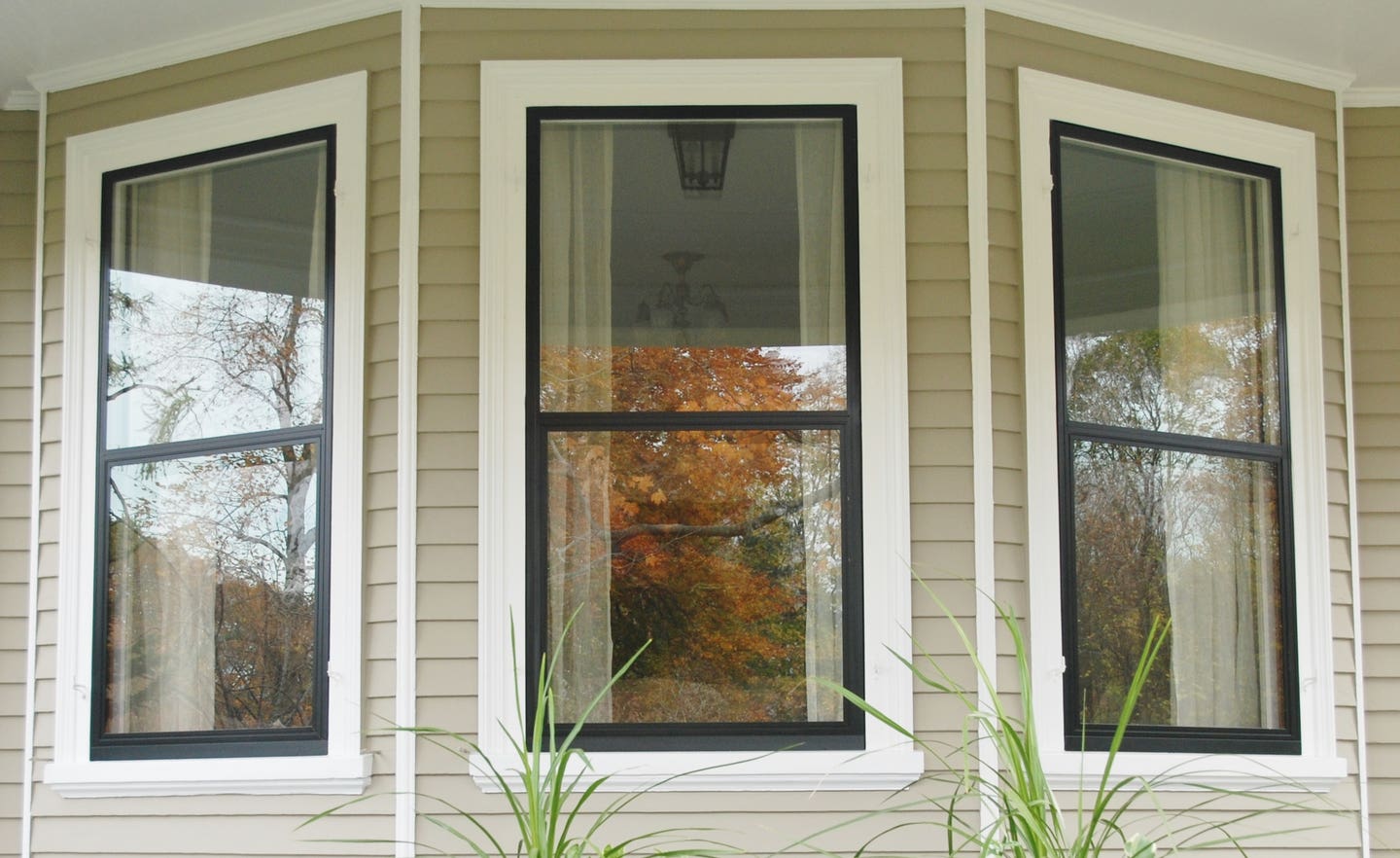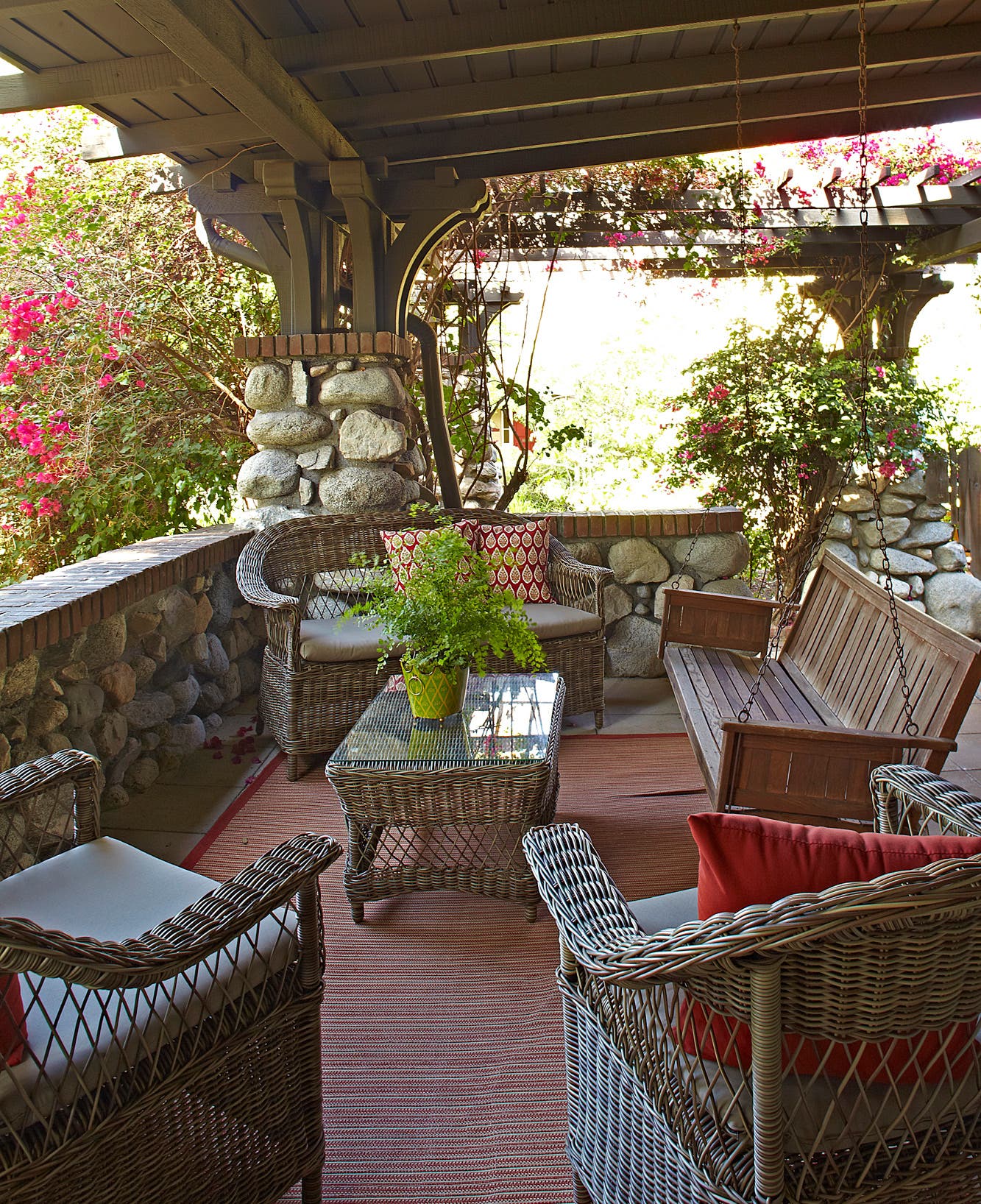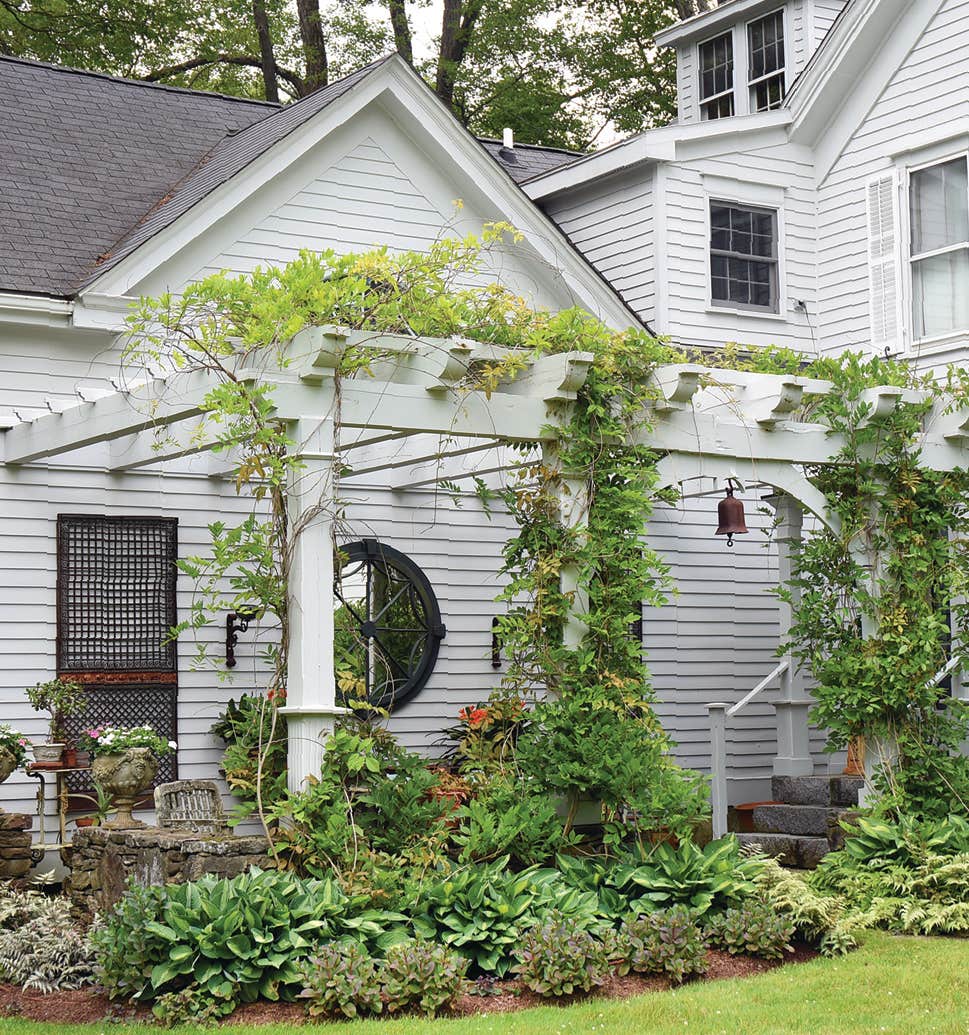French Doors Let In the Light
Whether they open onto a side porch, visually join two rooms together, or invite you to step out onto the terrace, French doors are a delightful way to move from one space to the next. By their nature — they are, after all, mostly glass — they bring in abundant light.
ABOVE: French doors open from the breakfast nook to a sunny patio in this new A&C kitchen in California. Photo by Linda Svendsen
Whether they open onto a side porch, visually join two rooms together, or invite you to step out onto the terrace, French doors are a delightful way to move from one space to the next. By their nature — they are, after all, mostly glass — they bring in abundant light.
The first French doors were actually casement windows that stretched from the floor to near ceiling. Louis XIV had 70 of them installed in the Hall of Mirrors at Versailles in the 1680s, where they opened onto the garden. Imagine the sensation they made among the denizens of the French court! Hinged so that each pair met in the middle, the framed casements were glazed from top to bottom with panes of glass in orderly rows of two, held in place by muntins. Less grand iterations have appeared ever since, but the basic form — paired doors with even rows of divided lights — has remained the same.
French doors came into their own around the turn of the 20th century, the height of the bungalow era, when builders’ supply houses began to offer both paired and single doors in stock styles. Because they were so widely available and so versatile, they appear in a variety of houses, from Prairie style and Arts & Crafts to Tudor Revival and Cape Cod.
Like colonnades, French doors are room dividers that allow a sense of privacy and separation without blocking light, a real boon in the modestly sized homes built in the first decades of the 20th century. For that reason, they were used throughout the house: to separate a formal parlor from an entry hall, for instance, or to link two public rooms together, such as adjoining living and dining rooms. Single versions were the doors of choice leading into sunrooms, enclosed porches, and sleeping porches.
Today, we tend to focus on French doors as a means to open up the back of the house to a patio or garden, but glazed doors are still useful anywhere light has trouble reaching: from the kitchen into the laundry room or pantry, for instance, or, with the addition of privacy glass, as a door to a bathroom lacking a window.
Classic swing-in or swing-out doors are still a great way to join rooms, provided you have room for the swing. While you can choose traditional interior French doors with divided lights (or at least the appearance of them) from many companies, the simplest option is a door with a single glass panel. Even here, there are plenty of options: beveled glass, privacy glass in any number of clear or frosted patterns, or art glass in patterns inspired by Frank Lloyd Wright or Charles Rennie Mackintosh. Or perhaps you would prefer a pattern that plays up the architectural lines of your house. At least two manufacturers offer a French door with a simple Prairie-style linear grid; pairs of vertical and horizontal muntins create a pleasing nine-light Prairie pattern.
Doors can be ordered as paired sets or singles; some even slide into the wall, like a retro pocket door. Many of the companies listed below will customize door configurations to match trimwork details you’ve found in your house or another source. Look around a bit first; the door you want may actually be a stock pattern. Vintage Doors, for example, offers nearly a dozen stock French door styles typically found in early 20th century houses.
Door manufacturers have moved beyond single-pane glass sliding and casement patio doors to French door look-alikes, some with true divided lights. Exterior door options include the classic casement configuration, or a pair with one fixed and one swinging door. If you want to improve access to the back yard, there are folding door systems that cascade out of the way, creating a wide opening that blurs the difference between indoors and out. The folding door system offered by JELD-WEN is easy to move and capable of reaching across openings as wide as 48 feet. Sometimes called bifold doors, these durable units usually slide out of the way or fold on the outside of the house, so they won’t disturb your interior furnishings
Unlike single-pane French doors that were intended only for interior use, modern offerings typically come with a fleet of energy-saving, weather-beating options that promise years of excellent service, all in a package that will look right at home on the back of a house built a century ago.
—Mary Ellen Polson
Most of these companies offer French, patio, or other glass doors, including some with specialty glass and other options, like privacy glass.
- Ambiance Doors ambiancedoors.com
- Artistic Doors & Windows artisticdoorsandwindows.com
- Beveled Glass Works beveledglassworks.com
- Belisle Ancestral Doors & Windows belislewindows.com
- Coyle Lumber & Millwork coylelumber.com
- Craftmaster Interior Doors cmicompany.com
- CraftsmanDoors.com craftsmandoors.com
- Designer Doors designerdoors.com
- Hahn's Woodworking Co. hahnswoodworking.com
- Heartwood Fine Windows & Doors heartwoodwindowsanddoors.com
- Historic Doors historicdoors.com
- International Door & Latch internationaldoor.com
- Lamson–Taylor Custom Doors lamsontaylor.com
- JELD-WEN jeld-wen.com
- Kolbe & Kolbe kolbe-kolbe.com
- Lynden Door lyndendoor.com
- Madawaska Doors madawaska-doors.com
- Marvin Windows and Doors marvin.com
- Masonite masonite.com
- Mendocino Doors mendocinodoors.com
- McCoy Millwork mccoymillwork.com
- Pinecrest pinecrestinc.com
- Select Interior Door selectcustomdoor.com
- Simpson Door simpsondoor.com
- Sun Mountain Door sunmountaindoor.com
- Woodharbor Doors & Cabinetry woodharbor.com
- Woodport Interior Doors teamowensinc.com
- Woodstone Architectural Windows and Doors woodstone.com
- Yarrow Sash & Door Co. yarrow.mb.ca
- Vintage Doors vintagedoors.com
Mary Ellen Polson is a creative content editor and technical writer with over 20 years experience producing heavily illustrated know how and service journalism articles, full-length books, product copy, tips, Q&As, etc., on home renovation, design, and outdoor spaces.



